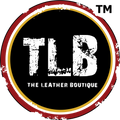Types of Leather - A Day in Leather School
Across this week, The Leather Boutique brings to you an array of products that exemplify the different types of leather our brand works with. To the uninitiated, leather might all be one and the same. But we believe a true understanding of this ancient medium comes through an appreciation of its nuanced intricacies. When it comes to leather, beauty is indeed in the details!

The type of leather used must compliment the product it makes and vice-versa.
Broadly classified as aniline, semi-aniline or pigmented, hide differs in appearance depending on the way in which its surface is finished. The finishing process affects finer details like its stain-resistance, texture and even the way it ages. Moving from soft and supple to dense and shiny, each leather has its own set of unique characteristics by which the erudite can set them apart.

Aniline leather and the Classic Flap it is made from
The most natural in appearance is aniline leather where the natural surface of the hide is visible. With no polymer coating or pigments to cover its surface, aniline leather is less resistant to soiling but retains the unique grain of the hide even when dipped insoluble dyes. The beautifully soft bag you can’t seem to stop touching? That’s aniline!

Pigmented leather, easily distinguishable for its filled out creases, can be embossed with any number of surface designs like the netted one used in our canary day bag.
On the other end of this broadly classified spectrum, is pigmented leather. It is coated with polymers or pigments to be more sturdy and durable and can be used across a wide range of products. Although less natural in appearance, pigmented leather is very resistant to stains and marks and can feature a variety of textures depending on the coating. The textures can vary from full grain where the grain surface is left intact, to the worn-out effect in antique grains created by an unevenly applied top coat.

In the case of corrected grain leather used in our Tribeca Shoulder Sling, the grain surface is abraded to remove imperfections before the coating is applied. Only then is it embossed with a superficial grain surface.

Ideal for travel accessories like our Dunkirk duffel, pull-up leather simply gets better with wear.
Similar to aniline leather but differing in technique and application is pull-up leather. The original surface is coloured in aniline dyes that have been specially infused with natural-based oils or wax. These oils darken the aniline colouration but bring out a lighter colour when ‘pulled up’. As it stretches with use, this leather produces a unique effect akin to ageing with time. So now you know why your father’s briefcase just seems to look better each year!

Used widely as a fabric for apparel, suede is easily malleable because of its feathery nap.
The velvety finish of suede and its unique textural feel has brought it voguish parlance. Getting aniline leather to this unusual finish, however, is a fascinating process. It is distinctively derived from the soft, under-side of the hide or split as opposed to most other leathers that come from the tough exterior layer. The natural fibre found on this side provides the soft, fuzzy finish or nap that moves from feathery smooth to shaggy depending on the animal the hide came from.

The technique of sanding or buffing is employed to lightly abrade the surface grain to yield Nubuck from aniline leather.
Similar in texture to suede is nubuck that also embodies a downy velvet finish. Nubuck, however, is produced by buffing the grain surface of the aniline dyed leather. The nap on this leather is considerably smoother than that of suede owing to the tighter fibre structure of the grained surface.

Commonly used to represent punk style, avant-garde designers around the world can’t seem to get enough of distressed leather. Our limited edition Steampunk Satchel is a testament to its unique appeal.
An emerging, hugely trendy technique that can be applied across all types of leather is distressing. Here, the leather is treated to have a superficially aged, worn-out appeal. While it may seem simple enough to scrape and weather, a set of carefully applied techniques are required to prevent any damage to the integrity of the hide.
